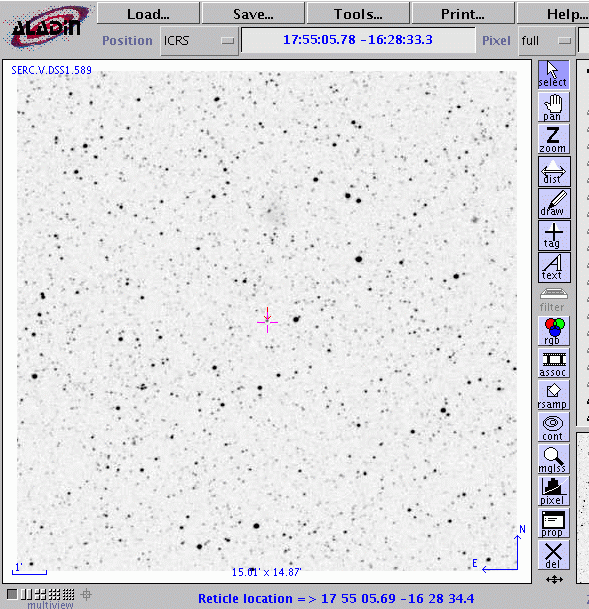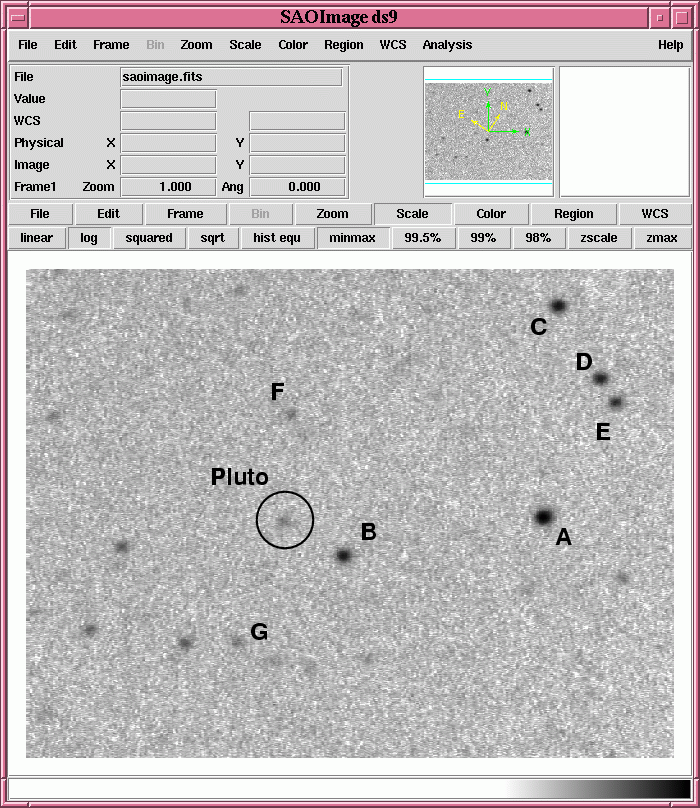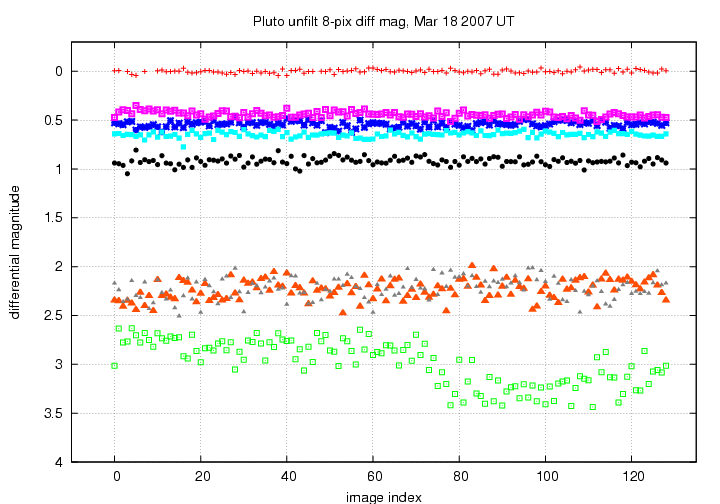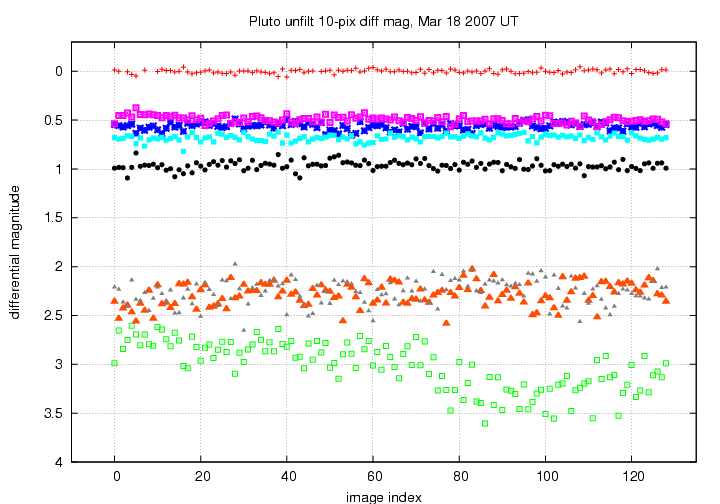
On UT 2007 March 18, Pluto passed in front of the star UCAC2 25823784 at (J2000) RA = 17h 55m 05.70s, Dec = -16 deg 28' 34.4", in northwestern Sagittarius. Observers in the United States had a chance to record the brief dip in the combined light of the star and planet when the disk of the planet covered the star.
The field lies in the Milky Way and is rather crowded, as this chart (about one quarter of a degree on a side) from Aladin shows.

Tony George observed the event at the Columbia Basin College Moore Observatory:
Latitude: 46°15'08.4" N Longitude: 119°07'36.5" W Elevation: 125.0 m We will use the Meade 16-inch LX200GPS w/f3.3FR and Meade DSI camera.
Tony kindly made available to me copies of his FITS images so that I could carry out an independent analysis.
Tony provided a total of 129 FITS images. Each image I grabbed
I was unable to work with the raw FITS images directly, since my tools of choice -- XVista and IRAF -- were unable to read the data properly; the fault may be mine with IRAF, since I have an ancient version and don't use it very often. The pixel values were unusual: they ranged from about 1,161,000,000 counts to 1,168,000,000 counts. I am guessing that this represents some sort of co-addition of many shorter frames.
In any case, I modified the data in the following manner: the original pixel value V was converted to a new value N via
[ V - 1,161,240,000 ]
N = (int) [ ---------------------- ]
[ 276 ]
The resulting values fell into the range 0 - 32767, which was much more convenient for computation and display. I examined the histogram of empty sky values afterwards and found reasonably ordinary statistics.
Here's one of the images. North is to the upper-right, East is to the upper-left, and the field of view is about 12 arcminutes on a side.

I measured the light from these (and all other detectable objects) in the frame using circular apertures of radius 6, 8 and 10 pixels. The Full-Width at Half-Maximum (FWHM) of the images was about 8 or 9 pixels. I sent the photometry through inhomogeneous ensemble photometry so that I could use as many comparison stars as possible. The zero-point of the ensemble is set to the brightest star, marked "A" in the picture above.
Below are graphs showing the light curves of the stars and the Pluto-plus-star combination. Note that the scatter in the measurements is smallest for the bright stars (near the top of the graph) and larger for the faint stars (near the bottom). I have shifted Pluto -- the green squares -- by +0.5 magnitudes in order to separate it from the comparison stars "F" and "G".



The light of Pluto-plus-star clearly dips by about half a magnitude, starting around frame number 75 and continuing to the end of the images in the dataset. It's not clear to me whether the light recovered fully by the time of the last image -- I suspect not, but the signal to noise ratio is very low.
I provide below the differential photometry of Pluto-plus-star in ASCII format: the interesting columns are
col 4: frame index number col 7: ensemble magnitude of Pluto-plus-star col 8: estimate of uncertainty in magnitude